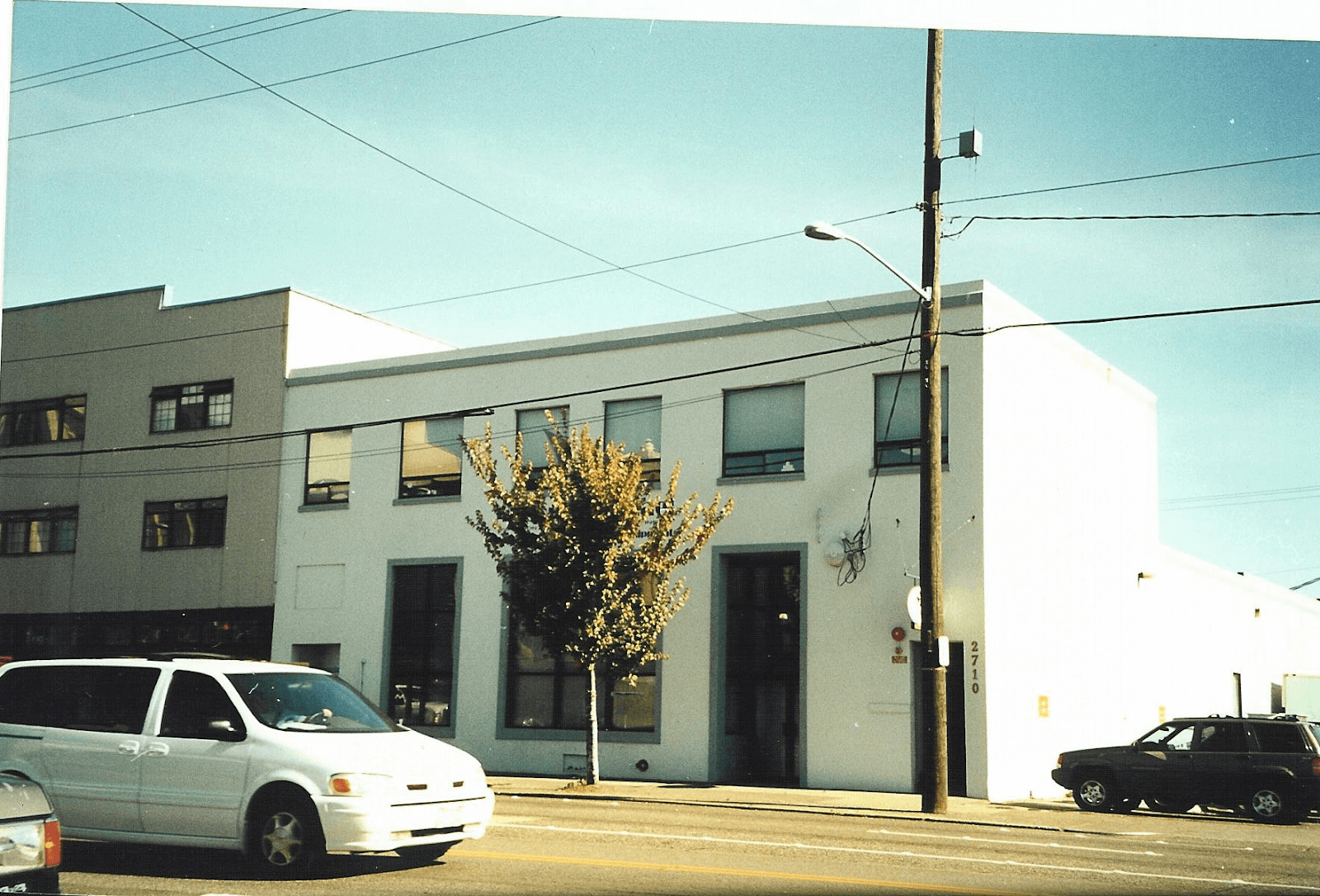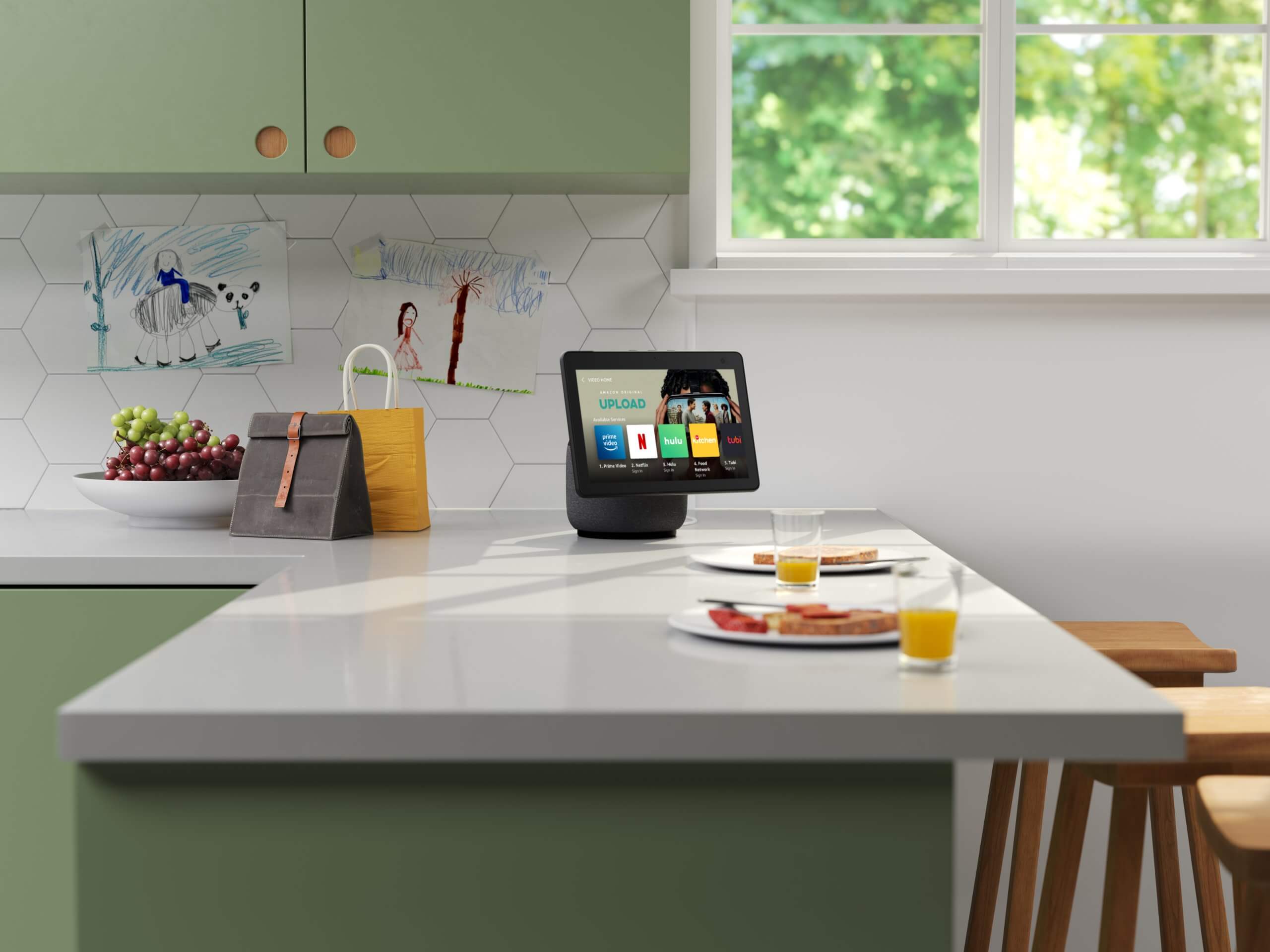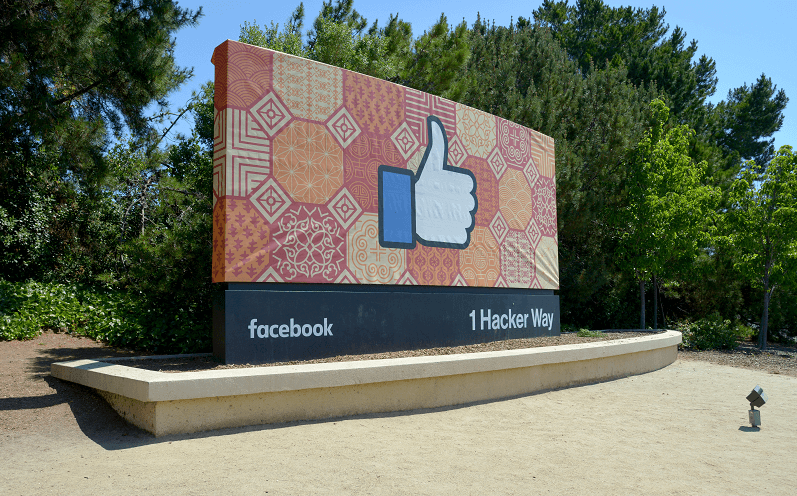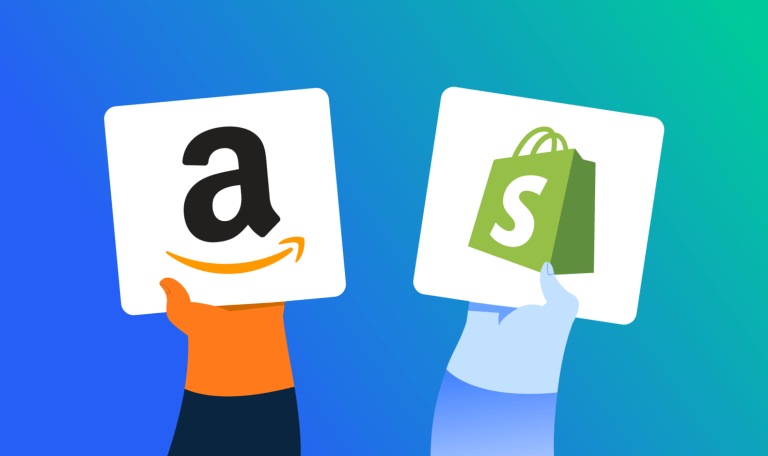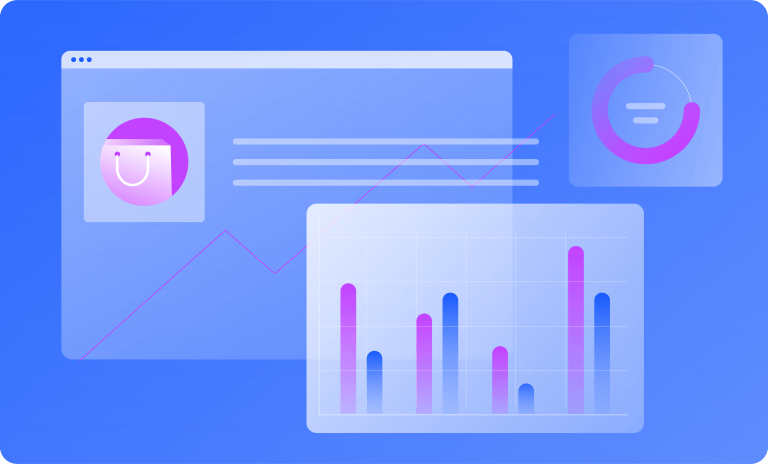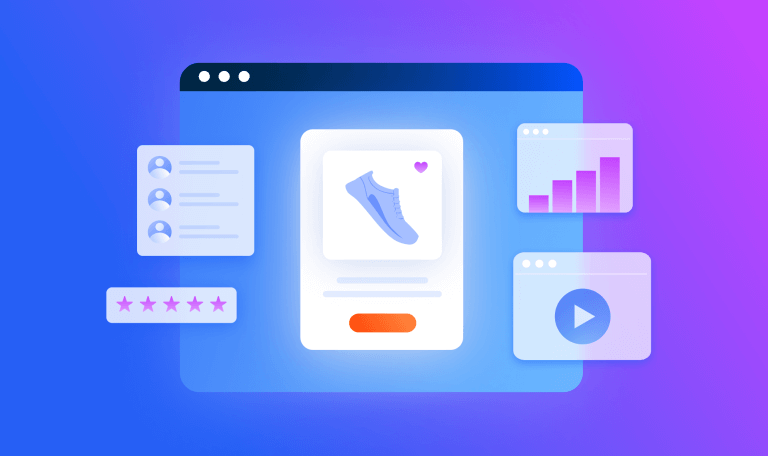Amazon and Facebook: A Structured Approach to Market Growth

What do Amazon and Facebook have in common? Both are giants on the internet; dominant mega-platforms that are ‘too big to fall.’ Both have followed a similar upward trajectory from the start and managed to beat the competition over and over again.
The art of competition
A look at their history reveals a successful growth strategy that includes a systematic shift from organic to paid search. In this blog post, we’ll take a closer look at their path to dominance to understand how and why the shift in search is connected and likely inevitable. We’ll also investigate what this means for your online business.
The history of Amazon: From a garage startup in Seattle to the world’s biggest online marketplace
When Jeff Bezos founded Amazon, he was already a successful businessperson. He could have gone for a career in an existing renowned firm and had a good life. But he saw opportunities on the internet that others didn’t (yet). And he was willing to take the risk of going solo and starting from nothing.
His idea was simple. It’s what we all know as eCommerce today. What he attempted was to sell products through the internet rather than in a brick-and-mortar store.
8 key milestones in Amazon’s growth
1994
Amazon was founded in a garage in Bezos’ home in Seattle, Washington state. Amazon was one of the first online bookstores. Bezos reckoned that books were a promising commodity to sell, as there was universal demand, they were low cost, and there were thousands of titles in the market.
During the first two months, he sold books to 50 states and 45 countries. Amazon generated $20K weekly.
Amazon’s first office building, Seattle Washington (Source: Amazon Press Center)
1997
Amazon went public under the AMZN ticker on NASDAQ at $18 per share.
1998
After establishing a strong name, Amazon ventured into additional markets and started selling other commodities, such as music CDs. The same year Alibaba was founded in China. The site was to become Amazon’s biggest competitor in Asia and influenced its further development.
2000
Amazon opened its doors to third-party sellers. By opening Amazon Marketplace, Jeff Bezos changed the business concept of the company. He realized that offering smaller businesses a platform to thrive is a way to grow and dominate a more massive chunk of the market. The step was a huge success, and the company turned profitable soon after.
2005
Amazon introduced its subscription service Amazon Prime. This customer loyalty program granted extras against a yearly $79. The main benefit was the two-day shipping-anywhere option. Amazon hit a raw nerve with customers. Fast shipping was (and is) incredibly attractive and put Amazon ahead of the growing competition.
In the following year, Amazon introduced Fulfillment by Amazon. Sellers were now able to use Amazon’s shipping, distribution, and customer service. This allowed them to focus on selling and reducing resources, while Amazon expanded its dominance in logistics.
2008
Amazon started offering advertising features and kept developing advertising possibilities over the following years. Being a marketplace for brands and third-party sellers, the potential for advertising is evident and immense. Whoever wants to sell needs to advertise.
2009
Amazon launched a private-label brand, called AmazonBasics. At the time, it was a way for Amazon to sell low-cost, generic versions of electronic accessories, like cables and plugs. Today you can purchase a large variety of goods, such as kitchenware and other household items, pet supplies, holiday gifts, and more.
In recent years Amazon has added fresh groceries and restaurant service to its wide offering. Technical innovations include the AI virtual home assistant Alexa, Echo smart speakers, and Amazon Prime Air, a drone delivery service.
2015
Amazon opened its first physical store and later offered Amazon Go, an app that automatically charges your Amazon account when you remove items from the store.
Interestingly, when Amazon established a stronghold, they adopted the business concept – always one step quicker than everybody else. In the early years, the company grew because it opened up to third-party sellers; today, the trend is to push their own brands to expand dominance.
The history of Facebook: From a Harvard dorm room to the world’s most influential social media platform
When Mark Zuckerberg had spare time while studying psychology at Harvard, he liked to play around with his programming skills. Facebook was initially a university ‘face book‘ – a directory of students featuring their photos with some additional information – turned digital. There was nothing commercial about it. The idea was to connect students at the same university, a purely social thing.
6 key milestones in Facebook’s growth
2004
Facebook was founded at Harvard University, available to Harvard students only. By the end of the year, companies were willing to pay money to get exposure on the popular network.
2006
After gradually expanding into other universities, then high schools, Facebook eventually opened to anyone over 13 years with a valid email address. Large brands quickly recognized the opportunity to engage directly with customers and sensed enormous marketing potential.
2006
The same year, Facebook introduced APIs so that programmers could write code to be used directly on the Facebook platform. This allowed developers to offer games and digital products through Facebook.
2007
Facebook added paid advertising features.
Facebook Ads included three parts: First, Facebook Pages, which look like regular profiles but include advertising tools, offering businesses a way to present themselves and their products. Second, Facebook Social Ads, an ad platform that lets users place ads and banners. Third, an interface that allows marketers to collect insights on people’s activities on Facebook.
2012
Shortly after Facebook acquired Instagram, a network that threatened to turn into its strongest competitor, the company went public. The shares sold at NASDAQ for $38.
2016
Facebook launched its social marketplace. Individuals and companies could now offer anything for sale. The platform does not include a feature for payment but still adds a commercial level to the primary social network.
Over the years, Facebook acquired and took over many smaller rival companies, incorporating their technology into the platform. Some continue to operate separately, such as WhatsApp. Facebook also keeps launching new functionalities in an effort to offer more possibilities to its users.
The interesting part is that Facebook, as a purely social initiative, makes money through advertising. To be able to grow, they first let brands advertise. Later, the platform turned into a giant advertising machine itself.
Amazon’s turning point: Responding to the D2C trend
1) The rise of Direct-to-Consumer
In recent years, direct-to-consumer (D2C) brands have grown in popularity across the web as more shoppers shift to eCommerce. Personalization use cases have become more relevant for retailers and brands. At Similarweb, we’ve been following this trend with keen attention for a while.
There’s one player who’s particularly impactful in advancing the D2C market. We’re talking about Shopify, Founded in 2004, the company sets the standards today and is a serious challenger to Amazon’s crown. If Amazon is a vast online department store, Shopify is an online shopping mall, allowing store owners to create online shops on its platform, list their products, and manage their logistics through the marketplace.
2) Private label acceleration
Amazon’s concept was based on selling items that are convenient to sell – no production cost, large variety, and big consumer demand. What has changed? How come Amazon is now focusing on its house brand?
According to a report by Nielsen, developing private labels has turned into a global trend. As Amazon grew, it began to acquire other companies. Offering products and using Amazon’s own infrastructure and the tremendous audience became more beneficial than dealing with them as competitors.
Amazon’s largest private brand is AmazonBasics, with 978 products in various categories, including computers, electronics, home and kitchen accessories, luggage, and more. Other labels offer textiles, hygiene products, baby supplies, and even groceries and food. Prime Day 2020 provides proof of its rising popularity, as you can read in this blog post about the results of Amazon’s biggest shopping event.
With Amazon promoting its brands, the competitive landscape of Amazon has changed. Sellers were up against each other; now, they are up against house brands that are being favored by the network. The result is that Amazon Advertising is becoming more prominent and vital for your growth as a seller on Amazon. Organic search does not yield the results it used to, and if you want to get found on Amazon, paid search is more effective.
Facebook’s turning point: Paid search marketing goes viral
The trend of declining organic search traffic is evident on Facebook as well, and as this Hootsuite article explains, across industries in general. In recent years, brands’ share of organic traffic on Facebook has decreased to less than 2%.
For Facebook, advertising is the primary source of revenue. As of 2020, brands spend $80B on Facebook Ads, and the trend seems to continue to grow. Facebook ad revenue in 2020 is expected to increase by 4.9% year-over-year (YoY).
What started with the charm of personally reaching their prospects turned into a competition for attention – like all advertising. By offering paid advertising options to users, Facebook changed the character of the platform and the odds for advertisers.
A branded search does not necessarily lead you to the brand itself anymore. For the individual marketer, the implementations are the same as for the seller on Amazon: if you want to get found, your best option is paid search.
Conclusion: Know your competitors and invest wisely
Amazon and Facebook each have their unique story. The moral of their stories is the same. For those who want to market their brands, it all boils down to competition. Your advertising either competes against brands with home advantage, or advertising competition is necessary to finance the platform it lives on. Either way, it’ll cost you.
Remaining competitive, especially under the impact of COVID-19, is increasingly difficult. There’s no way around investing money into advertising, but it can quickly get expensive. That’s why every dollar spent requires justification. You need maximum ROI on your product listings and advertising, and you need to prove it.
Learn how to compete from the best-in-class
How do Amazon and Facebook manage to stay one step ahead of the competition for so long? For starters, they make an effort to understand the competitive landscape. Threats most often originate in competition and so do opportunities. If you don’t see them, you can’t act upon them.
Tools like Similarweb’s Search Intelligence provide data that lets you analyze the competitive landscape and discover emerging trends, shifts in consumer behaviors, and new potential growth opportunities in your market. Whether you are a small to medium-sized business (SMB), or a leading retail brand, our data-driven insights function as a basis for building your advertising strategy on Amazon, Facebook, Google, or any of the prominent advertising networks.
Ready to take the next step? Get in touch!
Contact us today for access to unrivaled transactional data about your online sales, your competitors’ performance, and much more.
The ultimate edge in retail insight
Put the full picture at your fingertips to drive product views and sales

